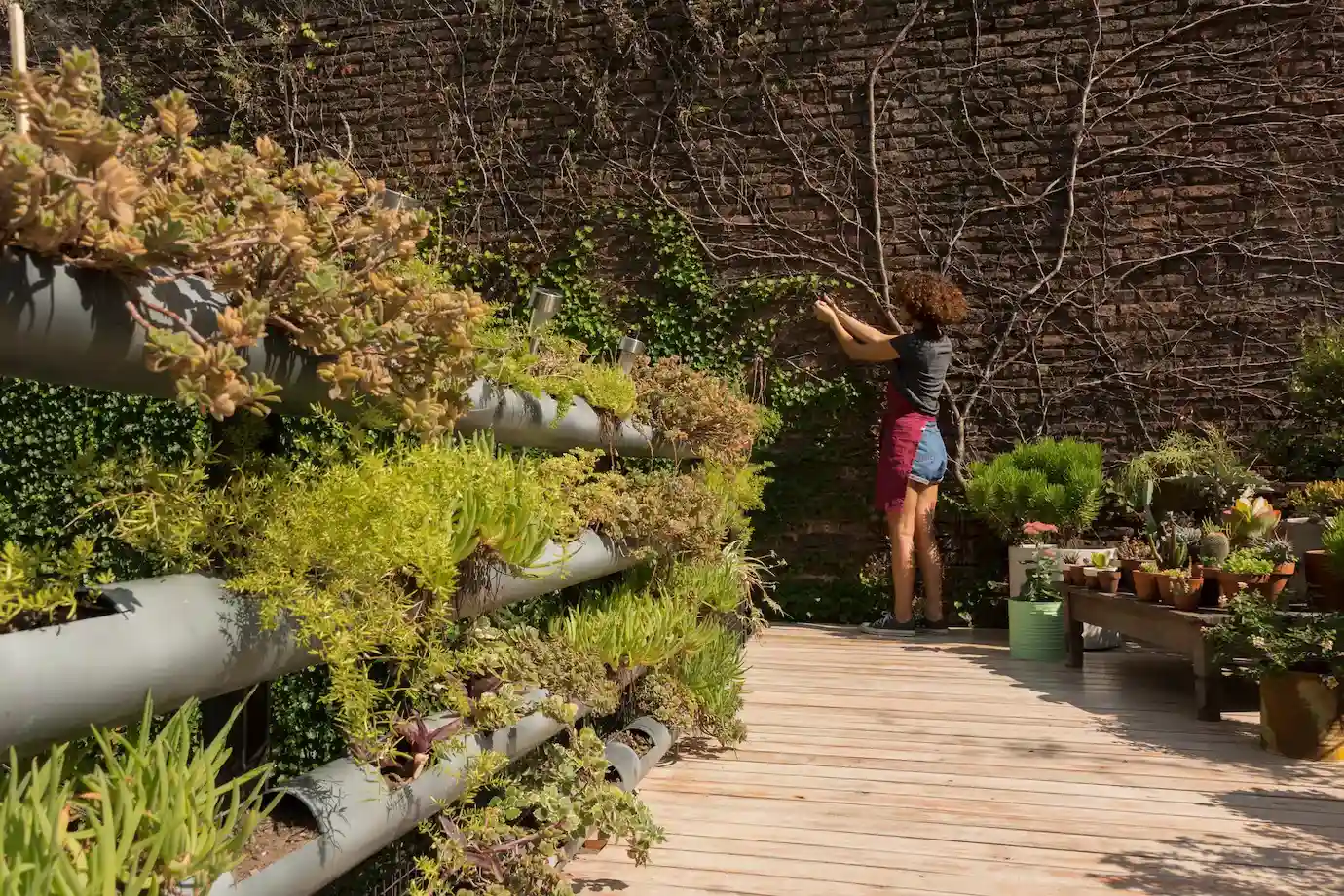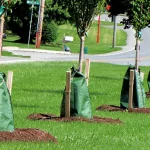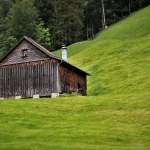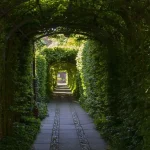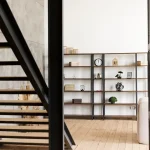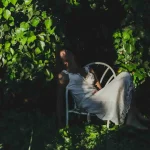Gardening in a small space with limited sunlight might seem challenging, but it can be a rewarding experience. You don’t need a sun-soaked plot to create a vibrant garden—many plants thrive in low-light conditions and can transform your shady corner into a lush oasis. With thoughtful planning, the right plant choices, and a dash of creativity, you can make the most of your shady small garden.
Understanding Your Shade Garden
Before diving into plant selection, it’s essential to understand the type of shade your garden receives. Not all shade is created equal, and knowing the difference can help you choose the best plants for your space.
- Full Shade: This area receives little to no direct sunlight, typically found under dense tree canopies or on the north side of buildings. Full shade requires plants that can thrive without much light, like ferns and hostas.
- Partial Shade: These spots get a few hours of direct sunlight, usually in the morning or late afternoon. Partial shade offers more flexibility in plant selection, allowing for a mix of shade and sun-tolerant varieties.
- Dappled Shade: Often found under trees with light foliage, dappled shade provides filtered sunlight throughout the day. This type of shade is ideal for woodland plants and those that prefer indirect light.
Understanding your garden’s shade type will guide your plant choices, ensuring they flourish in your unique conditions.
Choosing the Right Plants
Embrace the Beauty of Shade-Loving Plants
One of the best aspects of a shady garden is the variety of plants that thrive in low-light environments. From foliage-rich greenery to delicate flowers, there’s no shortage of options to create a visually stunning garden.
Monty Don, a well-known gardener and broadcaster, encourages gardeners to “embrace the shade,” noting that many beautiful plants thrive in low-light conditions, turning a shady garden into a tranquil oasis. Here are some top choices for your shady small garden:
- Hostas: These hardy perennials are a staple in shade gardens. Known for their lush, broad leaves, hostas come in various colors, from deep greens to vibrant yellows and blues. Their low-maintenance needs make them perfect for beginners.
- Ferns: Ferns are synonymous with shade gardens. Their feathery fronds add texture and movement to the garden. Varieties like the Japanese Painted Fern offer unique color variations, bringing a touch of elegance to your space.
- Astilbes: If you’re looking for color, Astilbes are an excellent choice. These shade-loving perennials produce feathery plumes in shades of pink, red, and white. They add vertical interest and contrast beautifully with green foliage plants.
- Heucheras (Coral Bells): Heucheras are prized for their colorful foliage, ranging from deep burgundy to bright lime green. They also produce delicate flowers on tall spikes, adding another layer of interest to your garden.
- Hydrangeas: While some hydrangeas prefer full sun, varieties like the ‘Annabelle’ thrive in partial shade. Their large, round blooms can brighten up a shady corner, and their low-maintenance needs make them a gardener’s favorite.
Vertical Gardening: Making the Most of Small Spaces
In a small garden, every inch counts. Vertical gardening is a fantastic way to maximize space, especially in shady areas. P Allen Smith, a garden designer, suggests incorporating climbing plants or wall-mounted planters to add height and dimension to your garden.
- Climbing Hydrangeas: These shade-tolerant climbers can be trained to grow up walls, fences, or trellises, creating a lush, green backdrop in your garden.
- Ivy: English Ivy is a classic choice for vertical gardening in the shade. Its evergreen leaves provide year-round interest and can be trained to cover walls or grow in hanging baskets.
- Ferns in Hanging Baskets: Ferns like the Boston Fern or Maidenhair Fern do well in hanging baskets in shaded areas. Their trailing fronds create a cascading effect, adding a soft, lush feel to your garden.
Experimenting with Textures and Foliage
A shade garden can be just as vibrant and interesting as a sun-filled one. Jamie Durie, a landscape designer, advises gardeners not to be afraid to experiment with different textures and foliage colors to create visual interest.
- Mixing Leaf Shapes: Combine plants with varying leaf shapes, such as the broad leaves of hostas with the delicate fronds of ferns, to add depth and contrast.
- Color Contrast: Use plants with different foliage colors to create striking contrasts. For example, pair the deep purple leaves of Heucheras with the bright green of ferns or the silver hues of lungwort.
- Layering: Plant in layers, with taller plants at the back and shorter ones in front. This technique adds dimension and ensures all your plants get the attention they deserve.
Creating a Tranquil Oasis
Shady gardens naturally lend themselves to creating a calm, peaceful atmosphere. Here’s how to enhance that sense of tranquility:
Incorporate Water Features
Water features are a great way to bring sound and movement into your garden, making it feel more dynamic. Carol Klein, a gardener and broadcaster, suggests incorporating water features to add a sense of tranquility and visually expand your space.
- Small Fountains: A small fountain can fit even in the tiniest garden, providing the soothing sound of trickling water.
- Reflective Ponds: A reflective pond or a water bowl can make your garden feel larger and more serene, as the reflections of plants and sky add to the sense of space.
Use Groundcovers
Groundcovers are excellent for filling in gaps between plants, suppressing weeds, and adding a lush, carpet-like effect to your garden. Carol Klein recommends underplanting trees with shade-tolerant groundcovers to create a cohesive, lush look.
- Periwinkle (Vinca Minor): This low-growing plant produces small blue flowers and spreads quickly, making it ideal for covering large areas.
- Ajuga: Ajuga, also known as bugleweed, is a fast-spreading groundcover with dark purple leaves and blue flower spikes. It’s perfect for filling in shady spots.
- Sweet Woodruff: With its delicate white flowers and fragrant leaves, Sweet Woodruff is a charming ground cover for shaded areas.
Design with Purpose
Even in a small, shady garden, thoughtful design can make a big impact. Christopher Lloyd, a garden writer, emphasizes the importance of selecting plants that complement each other in terms of color, texture, and height to maximize the potential of your space.
- Create a Focal Point: Use a unique plant, a piece of garden art, or a small bench as a focal point to draw the eye and create a sense of place.
- Pathways: Adding a simple stone or gravel pathway can guide visitors through your garden and make it feel more expansive.
- Seating Areas: If space allows, include a small seating area where you can relax and enjoy your garden. Even a single chair tucked into a corner can create a cozy retreat.
Personal Reflections on Shade Gardening
When I first moved into my current home, the garden was a small, shaded patch with little to offer. I was initially discouraged, thinking that the lack of sunlight would limit what I could do. However, after some research and a few visits to local garden centers, I discovered the beauty of shade-loving plants.
I remember the first time I planted hostas and ferns—watching them thrive in an area where I thought nothing would grow was incredibly satisfying. Over time, I experimented with different textures and colors, adding hydrangeas and heucheras to create a layered, visually interesting garden. The transformation was remarkable, and what once was a neglected corner became my favorite part of the house.
Now, I take pride in my little shade garden. It’s a peaceful, cool retreat where I can escape the hustle and bustle of daily life. If you have a shady garden, don’t see it as a limitation—embrace the opportunity to create something unique and beautiful.
Resources for Further Inspiration
While specific studies on small shade gardens might be limited, several resources can provide valuable insights and inspiration:
- Royal Horticultural Society (RHS): The RHS offers comprehensive gardening advice and plant information, including recommendations for shade-tolerant species.
- National Gardening Association: This organization provides resources and research on various gardening topics, including shade gardening.
- Botanic Gardens: Visiting your local botanic garden can offer inspiration, as many feature shade gardens that showcase suitable plants and design ideas.
- Gardening Magazines and Websites: Publications like Gardeners’ World, Better Homes and Gardens, and The Spruce offer practical tips and plant recommendations for shade gardens.
Conclusion
Gardening in a small, shady space doesn’t mean you have to compromise on beauty or variety. By understanding your garden’s shade type, choosing the right plants, and incorporating thoughtful design elements, you can create a stunning, tranquil oasis that reflects your style. Remember to experiment with different textures, colors, and vertical gardening techniques to make the most of your space. With a little creativity and the right approach, your shady small garden can become a lush, inviting retreat that you’ll love spending time in.
Related Stories

